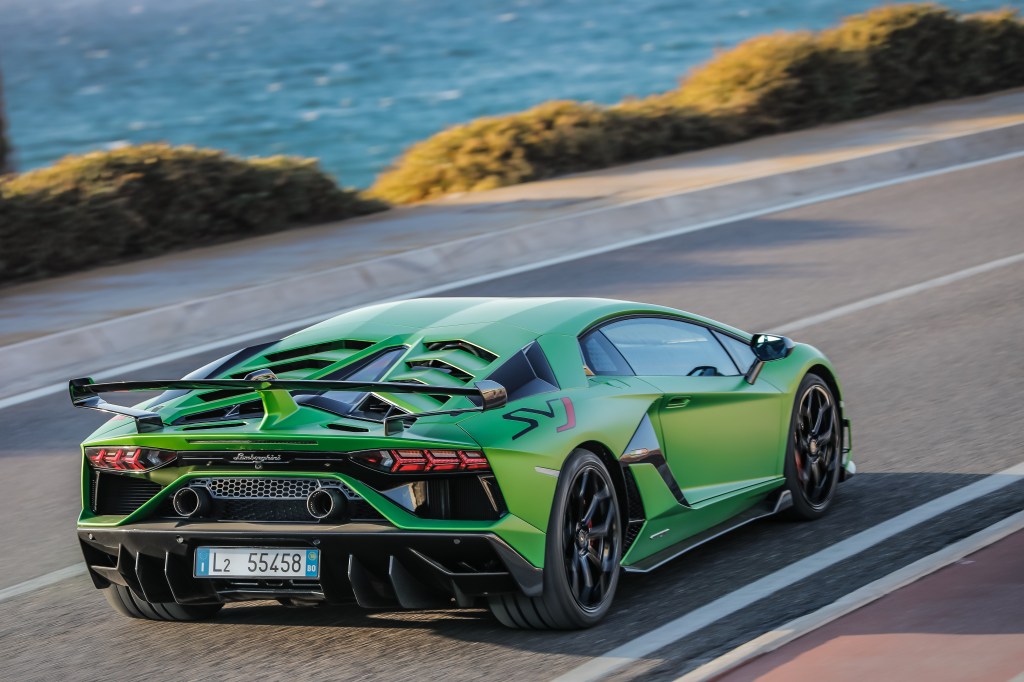
Suspension Collapse A Cause For Lamborghini Aventador SVJ Recall
Only in the US Lamborghini Aventador SVJ supercars are being recalled because of a problem with the suspension. According to Lamborghini, the issue is being blamed on a supplier that potentially damaged the aluminum frame threads that hold the Aventador suspension arms. The supplier was using a rework tool to fix suspension arm attachment points. If there is a failure the suspension can collapse with the resulting loss of control.
The Aventador suspension is an aluminum double-wishbone setup built with Ohlins

The Aventador suspension is an aluminum double-wishbone setup built with Ohlins. This is a pushrod suspension adapted for street use. Springs are inboard with shock absorbers near the front axles aid the hydraulic lift of the body. This feature is to help with parking lots, driveway dips, and speed bumps.
The good news is that with such small production numbers Lambo is only looking at four Aventador SVJ models involved in the recall. There were both coupes and roadsters in that sequence of four Aventador cars. They were built between July 10 and August 31. All four are considered as having the defect.
All of the affected Aventador cars are at dealerships

All of them are at dealerships so none have made it into customer’s hands. Those dealers have been advised not to drive the affected cars for safety reasons. Technicians are advised to inspect each car and replace the front portion of the frame at no cost to either dealers or customers.
Lamborghini’s replacement for the Murcielago, it was introduced in 2011 at the Geneva Auto Show as a 2012 model. This first year saw the most problems. Rather than a steel frame, the Aventador featured a carbon-fiber tub. The 6.5-liter V-12-powered mid-engine supercar boasted 700 hp. It could also be viewed through the Aventador’s vented louver window.
The Aventador’s transmission was an all-new seven-speed single-clutch unit sending power to all four wheels. Lambo chose the single-clutch automatic transmission over a dual-clutch setup because it said they were lighter, quicker, and allowed the driver the feel of a full gear shift. Paddle shifters are located on either side of the steering wheel. Its 0-60 time was just 2.7 seconds with a quarter-mile time of 10.4 seconds.
The aggressive angles and hard breaks of the Aventador have been adopted by mainstream car design

The aggressive angles and hard breaks of the Aventador have been adopted by mainstream car design. Integrated into the swoopy body are scissors doors that swing up from just below the A-pillar. The articulating batwing rear spoiler raises to expose the dual purpose ducting for air directed to the engine. Lower on the rear is a diffuser that allows gobs of exhaust heat to be exhausted out.
There are three driving modes with the selector in the console. They are “Strada,” which is Italian for “street.” This is the general comfort and cruising mode. Next up is the “Sport” mode. The suspension stiffens and the exhaust note is altered. This is said to be for “elevated street driving.” The third mode is “Corsa,” which is used for track time. Throttle response and also shifting are stiffened for a more direct response.
Would you like to know if you can afford a new Aventador? Replacing all of the filters, fluids, spark plugs and hardware updating costs around $4,000. A basic oil change is around $1,000.



